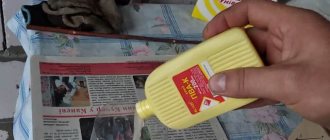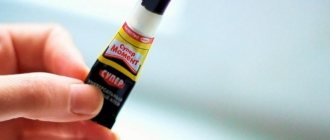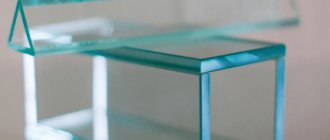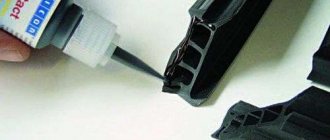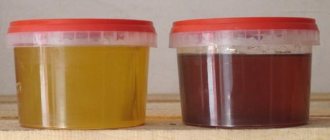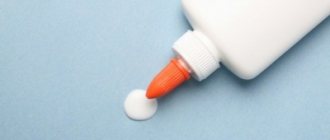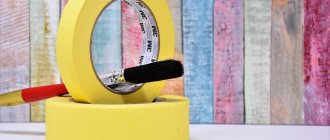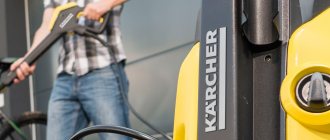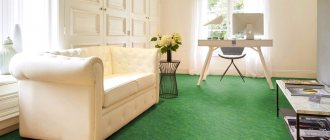Properties and characteristics of Titan glue
When performing repair and finishing work in an apartment, the adhesive composition is an indispensable attribute that allows you to quickly and reliably fasten facing materials and various parts to the walls and ceiling. Therefore, one of the main criteria when choosing an adhesive is its versatility. In this regard, among many manufacturers, the leader is Titan adhesive, which provides reliable connection of various finishing materials, including ceiling tiles, with concrete, wood and plaster surfaces.
The main advantages of the Titan adhesive composition are:
- Economical consumption;
- Possibility of application for internal and external work;
- Interaction with a wide range of materials;
- No need to prepare a solution;
- Elasticity and moisture resistance in any climatic conditions;
- Lack of color;
- No components harmful to health.
Mastic "Optilux Titan" LLC "Carbon" (Izhevsk): characteristics and use
Mastic is a thick, stretchy substance for connecting porous and non-porous surfaces: concrete, brick, stone, wood, plywood, etc. This product is used for laying and lining fireplaces, laying floor tiles and other coverings in rooms with high humidity. Optilux Titan mastic consists of a binder component, an inert filler and modifying additives. Available in plastic containers weighing 1, 8, 4, 9 and 20 kg.
It is necessary to clean the work surface from dust, grease and moisture. The mastic needs to be mixed well, and if it has become very thick, dilute it a little with water. Next, you need to apply the adhesive mass in a thick layer on one of the surfaces and press the glued product for a few seconds. The drying speed depends on the room temperature, the structure of the materials being glued and the thickness of the layer, but, as a rule, it takes 12–24 hours, after which you need to remove excess mastic and rub the seams.
Method of using Titanium adhesive for ceiling tiles
Regardless of the choice of adhesive composition and method of application, before applying adhesive for foam ceiling tiles, it is necessary to carefully prepare the ceiling surface. All existing cracks and crevices must be repaired and completely sealed.
Tiles can only mask minor irregularities, so if there are significant differences in the ceiling, then its surface must be leveled, then a layer of finishing putty must be applied, and then primed. In addition, it is not recommended to glue ceiling tiles to whitewash.
The method of using Titan glue depends on the form of release and is indicated by the manufacturer on the packaging. There are three main types of adhesive:
Used for gluing ceiling tiles, parquet, linoleum and wood. It is a colorless composition that is squeezed out in a thin strip from a sealed package. To glue ceiling tiles, glue is applied to its inner surface in a broken line, after which it needs to dry for 2-3 minutes. Next, the tiles are pressed tightly against the ceiling, the glue instantly sets and hardens within an hour.
Complete drying occurs within a day after application.
- Glue mastic.
Suitable for gluing any materials, including concrete, cement and plasterboard, as well as for leveling the surface when installing ceiling tiles. Before use, mix thoroughly, then apply with a spatula in the center of the tile and at 3 points along its perimeter. Next, the tile is pressed against the ceiling, after which its position can be adjusted within a few seconds. The mastic hardens 12 hours after application.
Interacts with all types of surfaces and is suitable for outdoor use. The adhesive composition is applied using a special gun in a thick layer, therefore it is used for cladding ceilings with severe surface irregularities.
Brands and costs of rubber glue
Several types of adhesive composition are known. To make the seam strong and sufficiently elastic, you need to choose the right fastening agent.
- Rubber glue 88n made in Russia. Its cost ranges from 200 to 400 rubles per kilogram. It glues rubber products, as well as any other materials, with high quality and for a long time. Sometimes it is diluted with benzene until a homogeneous consistency is obtained, reminiscent of thin sour cream. Lubricate the rubber part with the mixture, allow it to dry for 3-5 minutes, then apply glue again to both surfaces to be joined. After 5-6 minutes, the parts are firmly connected and dried under pressure.
- Rubber glue grade “A” is made from natural rubber. It is used for sewing clothes, leather goods, shoes, and for fastening rubber and woven materials. Creates a high-quality and durable connection and is very convenient to use. Rubber glue grade A costs up to 50 rubles per 50 ml package.
- “Glue 4508 rubber” is excellent for fastening rubber technical products and textiles. The cost of such a composition is within 100 rubles per 100 ml. When glue gets on paper, the rubberized fabric parts become sticky. Therefore, the adhesive composition is used to restore inner tubes, rubber boats, and waders. When treated with glue 4508, a plastic seam is obtained, which is durable, waterproof and resistant to environmental influences. When using it, you must strictly follow the recommendations on the packaging. The surfaces of the parts to be glued must be thoroughly prepared. Rubber often contains dust, particles of various substances and oil. They will have to be removed using special means.
- Rubber glue "GOST 2199-78". Used for gluing parts made of cardboard, leather, fabric and rubber. This rubber adhesive forms an elastic bond, leaves almost no traces, and does not require the removal of fat from surfaces. The adhesive mass is applied in an even layer to the parts. After 15 minutes, make a second layer of glue, wait for 2 minutes and firmly press the parts of the product together. The final drying of the glue is achieved within a day. Produced in packages of 1, 2, 50 and 200 kg. Often used on an industrial scale. In terms of quality and reliability, this rubber glue is significantly superior to popular superglues. It is easy to use, easy to transport and allows you to quickly and efficiently carry out repair work.
- Liquid rubber Plasti Dip. This is a rubber-based paint. It is an indispensable product for covering, protecting and improving the appearance of a car. The composition is applied to the body. Coating with liquid rubber gives the surface excellent shockproof and anti-slip properties, is resistant to moisture penetration, ultraviolet radiation, temperature changes, and has significant elasticity.
- Rubber cement. It is characterized by the fact that it does not glue leather parts tightly. Even after time, the glued surfaces can be separated. Used by shoemakers to fasten the outer part of shoes and the lining. The glue has a sticky, viscous consistency; the thickness varies. Apply to the surfaces of both parts and leave for some time to absorb. Then the parts are pressed against each other. Glue is very convenient for processing large surfaces.
What to do if the glue has thickened
During application, the universal adhesive composition Titan may thicken, which negatively affects its characteristics. In order to return it to its original properties, you can dilute the glue. For these purposes, use one of the types of alcohol:
- Ethyl (medical);
- Salicylic (alcohol solution of salicylic acid);
- Technical (denatured alcohol).
The use of nail polish remover containing acetone and isopropyl alcohol as a solvent is not recommended, since this composition may cause the adhesive to curdle.
Removing dried adhesive from surfaces is a painstaking undertaking, which is complicated by the presence of high-quality components in its composition. Anyone who knows how to dissolve glue can get rid of the problem. Chemically active solvent materials of natural or synthetic origin can help in solving this problem.
Glue Moment
The moment is also extremely popular when carrying out construction and renovation work. The range of its application is large. To dilute Moment, acetone and dimethyl sulfoxide, freely available in pharmacies, can be used.
Tile adhesive
Anyone who is busy renovating an apartment needs to know how to choose tiles and adhesive for them, and how to glue the tiles efficiently and quickly. There are three types of tile adhesive:
- based on cement, for its preparation it is necessary to carefully observe the proportions and follow the instructions;
- ready-made one-component glue, sold in the form of a ready-made paste, does not dry out for a long time;
- two-component glue. Prepared immediately before use. Its advantages include elasticity and manufacturability.
To properly prepare tile adhesive, you should know a few rules:
- the temperature of the components should be approximately equal, i.e. You cannot bring the mixture from the cold and fill it with hot water;
- add water to the mixture in small portions with thorough mixing;
- During operation, it is necessary to periodically stir the finished glue to prevent delamination.
Tile adhesive must be diluted with warm, clean water. Number of mixture components: 5 liters of water account for 20 kg of dry mixture. Source: kleigid.ru
The most accessible solvents
The most universal natural remedy, which can be used to remove dried traces of carpentry, plant, stationery and polyvinyl acetate compounds, is water. To clean the surface, simply blot the fresh residue quickly and rinse with water until the sticky residue disappears. Unfortunately, if the stain is old and firmly ingrained, then it is not possible to remove it using such a solvent.
Another popular product that can be used to dissolve glue has proven itself to be sunflower and baby oils. Each of them needs to grease the dried residue several times and wait a while. It will gradually lose its adhesive properties, and the solvent will mix with it, since many types of adhesive mixtures are oil-based. Upon completion of the procedure, the remaining marks are easily erased, and the surface is rinsed with water. Vaseline has a similar property; its high fat content promotes the rapid breakdown of molecules.
Among natural solvents, ordinary vinegar can be distinguished. You should wipe the stained area with it and wait half an hour. During this time, the stain will begin to lose strength, dissolve in acid, and the residue will need to be wiped off.
A mixture of baking soda and water in a 2:1 ratio is very effective in this matter. This paste-like substance is applied to the contaminated area, wait until the clot is completely dissolved and rinse with water.
Alcohol is considered an effective solvent, capable of decomposing many adhesive compositions. When applying this drug to the stained area after 5-10 minutes. the strong clot will soften. Next, the residues are freely removed during the process of wet wiping. Acetone has a similar effect, but should be used carefully when cleaning synthetic surfaces. Other known solvents are: gasoline, turpentine, white spirit, ammonia. When using them, for greater efficiency, the adhesive clot is preheated with a hairdryer. Thus, the process of its removal is accelerated.
Types of solvents
The choice of solvent should be based on several factors:
- age of glue;
- the type of surface itself;
- the degree of purity to which the process is oriented.
Let's look at the main types of solvents for different types of glue:
- A universal solvent is a folk remedy such as water. It dissolves not only stationery, but also polyvinyl acetate glue. It only works on a fresh stain.
- Another cleaner option is oil. Vegetable or baby oil is best. It is enough to generously rub the remaining glue and leave for a while. After the main stain has dissolved, wipe the contaminated area with a damp cloth. The stain will first dissolve and then be erased without serious problems. This method is effective on hard surfaces and skin.
- Vaseline has a similar effect. Due to the high fat content, molecules are quickly broken down.
- Another natural remedy for glue stains is vinegar. Rub the stain with it and leave for half an hour. After such exposure, the glue will come off much easier.
- Alcohol is a recognized assistant in the fight against such pollution. It promotes the decomposition of even complex adhesive compositions. This is a good answer to the question, ? A cotton pad soaked in alcohol is applied to the glue clot and left for about 10 minutes. After this, the stain is washed with water.
- Acetone can also be used. But it cannot be used on synthetic materials.
How to remove PVA?
Of all existing adhesives, PVA is the most susceptible to dissolution. The arsenal of tools that can be used to dissolve PVA glue includes the following materials:
- 1. hot soapy solution – when treating with this material, the surface should be washed with 9% acetic acid or 96% alcohol;
- 2. baking soda perfectly softens hardened residues; to get the result, you need to walk a hard sponge with soda over the PVA layer - it will be wiped off in a minute;
- 3. water softens the dried PVA clot, its soluble elements are separated from the emulsified suspension, the remains can be wiped off with a rag moistened with acetone, methanol, isobenzene or ethyl acetate.
Glue 88
There are three types of glue 88: 88-CA; 88-NP; 88-N, each of which has its own area of application:
- Glue 88-CA is moisture resistant, used for products in contact with aquatic environments, both fresh and salty, and withstands significant temperature changes. Finds application in construction, footwear, aviation and automotive industries. Used for linoleum flooring. Contact of the adhesive with steel and aluminum surfaces does not cause corrosion, and there is no release of toxic compounds.
- Glue 88-NP - used for gluing rubber made on the basis of rubber to metal, wood, glass, leather, concrete and various surfaces, and for gluing rubber products. The advantages of the glue include moisture resistance, resistance to temperature and the absence of corrosion of steel and aluminum.
- Glue 88-N is used for gluing vulcanizing rubber to products made of metal, wood, plastic, glass and concrete. Recommended for gluing polyisobutylene to metal and concrete.
When it dries or thickens, the question arises - how to dilute glue 88. For dilution, it is recommended to use benzene, the amount of solvent is determined visually - to the state of liquid sour cream and so that the glue does not flow off the brush and does not drag on it
How to get rid of traces of Super Glue and Moment glue?
A product such as Super Glue glues any materials together in a matter of seconds. Before you start working with it, you need to familiarize yourself with how to dissolve Super Glue if you need to correct mistakes. Several factors influence the choice of solvent:
- • how long ago the adhesive was used,
- • the type of surface on which it is located,
- • purity of the expected result.
The main thing is not to miss the time of its hardening. Otherwise, the work will become significantly more complicated; most often, the stained surface will lose its attractiveness irrevocably.
Among the effective methods for dissolving Super Glue, as well as its analogue Moment, acetone should be highlighted. However, it has a negative effect on varnished materials and may cause more harm than good. This should be taken into account before starting cleaning work. It is possible to remove a fresh stain in a couple of hours using dimethyl sulfoxide, which is freely available in any pharmacy.
Why is glue dangerous?
Before you start working with quick-drying glue, you need to know how to remove it if the adhesive liquid gets on the epidermis. Due to its liquid consistency, the product called “Moment” dries in a matter of seconds, penetrating into all the pores on the surface in contact with it. The composition is colorless, but has a distinct pungent odor and sets quickly, combining even with non-porous materials.
It is necessary to carry out various manipulations with glue such as “Moment” only while wearing rubber gloves. Children should not be allowed to touch quickly setting chemical products. Glue that has dried on the skin causes a feeling of tightness; over time, it will peel off on its own, but the skin, covered with a chemical film, stops breathing, which can result in various allergic reactions. To prevent the epidermis from suffering, it is better to use harmless methods to remove glue from the skin.
How to dissolve stubborn adhesives?
Many people do not know how to dissolve Titan glue, which belongs to the class of very resistant and difficult to remove compounds based on acrylic copolymers. Effective means that help dissolve it are concentrated plumbing acid, gasoline, dimethyl ketone, turpentine, methylbenzene, ethyl acetate. After soaking in these products, it is necessary to remove the residues mechanically.
When choosing a method for dissolving epoxy glue, you should remember that this will have a significant impact on the performance properties of the final polymer. The addition of solvents helps reduce viscosity, and the strength and water resistance characteristics of the product deteriorate. Suitable for dilution are acetone and denatured alcohol, which can evaporate quickly without remaining in the resin.
When choosing a product to dissolve rubber or 88 glue in case of drying, you can choose gasoline, since it is included in their composition. Dilute the adhesive composition to the consistency of liquid sour cream so that it does not drain from the roller.
Key factors to consider when breeding:
- 1. Adding a solvent significantly reduces the viscosity and strength of the polymer.
- 2. The service life of the adhesive and its curing period are increased.
- 3. Dilution causes the resin to shrink, which increases microcracks.
- 4. The color of the polymer changes.
- 5. Increases fluidity on verticals.
Each of us has had to deal with the problem of removing glue from surfaces such as plastic, wood, laminate, linoleum, clothing, etc. But the question always arises: how can you dissolve Superglue, Moment, PVA, PVC, Titanium and other most popular adhesive bases? There are many ways you can dissolve glue. In our article we will look at the most useful and practical tips on how to quickly remove glue using modern means.
How to dissolve dried super glue
In cases where the glue stains were left long enough and had time to dry out, ordinary solvents such as water, soapy water or alcohol will be ineffective. In such situations, experts recommend using special compounds.
One of the most common among them is dimexide. This is a dimethyl sulfoxide based solvent that has a primary effect on cyanoacrylate. Consequently, the risk of damage to the stained surface is minimized. You can buy dimexide at any pharmacy at an affordable price.
Other products that can dissolve super glue include:
- acetone and its derivatives;
- anti-adhesive containing propylene carbonate or nitromethane;
- petrol;
- acetone-containing nail polish removers.
Before using anti-glue, you must read the instructions for use.
You can watch the video on how to dissolve dried super glue.
How can you dissolve super glue from metal?
When gluing iron parts, you often have to deal with the problem of dissolving super glue from the metal. Treatment with acetone or solvent will be quite difficult. The problem is that these substances tend to evaporate quickly, without having time to react with the damaged area and achieve the desired result.
When the question arises of how to dilute the glue, it is necessary to take into account its composition and properties. When interacting with water or soap solution, it quickly thickens, and when the moisture evaporates, it begins to dry out instantly. Therefore, it is impossible to dilute it with these substances. In this case, some use technical acetone or gasoline.
To completely eliminate contamination, it is recommended to generously moisten a rag with solvent or acetone, apply it to the damaged area and wrap it with tape so as to prevent the access of oxygen. Within an hour, a thermal reaction occurs under the tape: the glue heats up and begins to soften. After time has passed, the so-called “compress” is removed, and the remaining adhesive is removed mechanically using a knife, blade or other sharp object.
If minor scratches or stains remain on the metal, they are carefully rubbed with sandpaper.
Moment super glue contains components that provide special bond strength. Therefore, without the help of specialists, it can be difficult to figure out how to dissolve the glue.
You can do this yourself, at home. To remove “Moment” or “Second” super glue from a metal object, in addition to acetone or solvent, also use:
- vinegar essence;
- ethanol;
- White Spirit;
- nitromethane
It is best to try to remove severely dried stains mechanically. This way you can get instant results.
How to dissolve Secunda glue? A glass cleaner containing ethanol can be used as an effective and fast-acting solution. It is applied to the stained area, left for a few minutes, after which the surface is wiped with a dry, rough cloth. If necessary, the procedure is repeated several times until the traces completely disappear.
Modern products and concentrates
To clean unnecessary glue stains from various surfaces, we will need assistants, which are modern chemicals. As a rule, such products can deal with adhesive stains in a few minutes.
So how to dissolve Superglue? Some housewives use products such as alcohol, acetone, soap, vinegar, and water to combat the adhesive base. All of these remedies are effective, especially if they are combined with each other. But this depends on the nature of the pollution.
Let's take a closer look at each method for removing adhesive stains.
Glue 88
There are three types of glue 88: 88-CA; 88-NP; 88-N, each of which has its own area of application:
- Glue 88-CA is moisture resistant, used for products in contact with aquatic environments, both fresh and salty, and withstands significant temperature changes. Finds application in construction, footwear, aviation and automotive industries. Used for linoleum flooring. Contact of the adhesive with steel and aluminum surfaces does not cause corrosion, and there is no release of toxic compounds.
- Glue 88-NP - used for gluing rubber made on the basis of rubber to metal, wood, glass, leather, concrete and various surfaces, and for gluing rubber products. The advantages of the glue include moisture resistance, resistance to temperature and the absence of corrosion of steel and aluminum.
- Glue 88-N is used for gluing vulcanizing rubber to products made of metal, wood, plastic, glass and concrete. Recommended for gluing polyisobutylene to metal and concrete.
READ How to insulate a ceiling in a private house
When it dries or thickens, the question arises - how to dilute glue 88. For dilution, it is recommended to use benzene, the amount of solvent is determined visually - to the state of liquid sour cream and so that the glue does not flow off the brush and does not drag on it
PVA glue
How can you dissolve PVA glue so as not to spoil the surface? This type of adhesive is the most amenable to cleaning, and there are no particular difficulties with it. It can be removed from surfaces such as wood, metal, plastic, using a wooden spatula or a construction spatula; it can also be cleaned using a knife. In order not to damage the surface from which PVA should be removed, the adhesive area must be moistened with warm water. Next, the surface needs to be treated with a solution. This can be acetone, benzene, methanol, ethyl acetate and other analogues.
If you need to remove PVA glue from clothing or other fabric products, you need to soak the adhesive stain in a soapy solution for several minutes. Afterwards rinse in clean water. Then you need to apply medical alcohol or vinegar to a dry cloth or napkin and wipe the area where the glue was previously.
How to remove Dragon glue stain?
The instructions advise diluting it with denatured alcohol or the “Denatured” composition from. When attaching ceramic tiles, do not treat them with water. Dragon glue is applied in stripes or dotted lines. If you are treating a large surface area, you can use a notched trowel.
Interesting materials:
How to clean a Xiaomi phone before selling it? How to clean dark tiles? How to clean the heating element of a washing machine from scale with citric acid? How to clean a stainless steel grater? How to clean grease from a grater? How to clean sofa fabric? How to clean fabric on chairs? How to clean fabric from glue? How to remove paint from fabric? How to clean oil from fabric?
Super glue
Still don't know how to dissolve Moment glue? This type of glue is not very easy to remove, so it should not be allowed to harden on the surface. If you urgently need to remove Superglue “Moment”, then you should immediately begin cleaning, and a 100% product – dimexide – can help with this. It can be bought at any pharmacy and is freely available. Moment glue belongs to the category of fast-setting and difficult-to-remove substances.
It should be taken into account that with the help of dimexide, a stain can be removed in a few hours, and you need to have patience for this. The concentrate works great for damaged clothing if it shows signs of Superglue. “Moment” is easily removed: soiled clothes should be soaked in dimexide concentrate for 30 minutes. This is enough to remove the stain.
It is important to know! Acetone can cause damage to the varnished surface on which the Moment glue is located, so it is better to use a more gentle option - dimexide.
If Moment superglue is on a varnished surface, parquet or laminate, you can carefully clean it off with a sharp object, for example, a construction spatula or a knife.
Removing superglue from various surfaces
Superglue can end up everywhere: on your skin, clothes, floor, phone, surface where you glue.
Removing instant glue from human skin
Human skin is a delicate living tissue. Therefore, try to use the most gentle methods for removing superglue from it. And if everything you have tried is unsuccessful, do not despair. The stain will disappear on its own in a maximum of 2 days. When trying to clean superglue from your hands, proceed in the following order:
- Wash the skin area with warm water and soap.
- Apply a paste of salt or soda to the stain.
- Rub for about a minute.
- Add more slurry and repeat, periodically wetting the area with glue in warm water.
- After some time, pick up the edges of the adhesive spot and separate the thin film of glue from the skin.
There are also other effective ways to combat superglue on human skin.
What not to do:
- do not remove the glue from the skin if you feel that it is coming off along with it and you experience pain;
- Do not rub the area with glue with abrasive materials (pumice stone or nail file) too actively: this can damage areas of the skin not affected by the glue.
Video: removing superglue from the skin of your hands
Cleaning textiles from superglue
Often, during work, glue gets on our clothes or furniture upholstery. Such stains spoil the appearance and require cleaning.
You can clean fabric from superglue in different ways - with a rolling pin, acetone, vinegar and other means.
Options:
- Dried glue is beaten off with a rolling pin or wooden masher.
- The item is placed in the freezer and heated with a hairdryer or iron if the fabric does not contain synthetics.
- The upholstery of a leather sofa or eco-leather product is removed from glue stains with a professional Anti-Glue.
- Fabrics stained with glue are often scrubbed in warm water using detergents.
- Natural fabrics are scrubbed with acetone using a toothbrush. After cleaning is completed, the fabric is rinsed and washed. It is necessary to test in advance the reaction of the material to acetone on an inconspicuous area of the fabric. It can discolor some things.
- For thin fabrics, use a vinegar solution.
- If the item is dear to you, and none of the methods work, take it to the dry cleaner.
Video: removing glue stains from clothes
Cleaning superglue from suede products
The following products will help you remove superglue stains from suede:
When cleaning suede from adhesive stains, proceed in the following order:
- Wipe the glue stain on the suede with warm water or hold it over a kettle. Hot steam will soften the dirt.
- Apply the selected product to a clean cloth and treat the stain.
- After cleaning is complete, apply a special impregnation to the suede and lift the pile with a brush.
We clean hard smooth surfaces from superglue: glass, tiles, marble
To remove superglue from hard, smooth surfaces, you can use any of the above products, following safety rules.
- Soften the glue for 20 minutes, applying a damp cloth soaked in the selected product to the problem area.
- We try to pick up the edge of the stain and with a soft tool (silicone or wooden spatula) carefully wipe the glue off the surface.
- Wash the cleaned surface with soap and water.
Glasses require more careful cleaning.
- Soak the glasses in soapy hot water for a while.
- Wipe off the glue stain with a soft cloth.
- Rinse well after finishing work.
Removing superglue from wood
Key points in the process of removing superglue from wooden surfaces:
- if wooden surfaces are finished, then the glue is removed with acetone or nail polish remover, and after cleaning the surface is washed and polished;
- also use citric acid instead of acetone;
- the laminate is cleaned of glue with Dimexide;
- unpainted wood is cleaned with mineral oil;
- If it is not difficult to restore a wooden surface after cleaning the glue, a mechanical method is used: the stain is sanded, having previously covered its edges with construction tape.
Clean wooden surfaces from glue using mineral oil, acetone, Dimexide
Video: removing superglue from laminate flooring
Cleaning your phone screen or laptop monitor
The best way to combat superglue stains on displays and monitors is Dimexide. It carefully and completely removes stubborn stains. However, do not forget about safety precautions: work with Dimexide with gloves.
If superglue gets on your phone screen, you can remove it with Dimexide.
We clean metal and lock cylinders from glue
To clean metal surfaces from glue use:
- acetone, alcohol, solvents such as white spirit and B 646;
- undiluted vinegar;
From the bitter experience of the unfortunate people who had glue poured into the lock, it is clear that the cleaning task will take a lot of time and effort. The glue from the lock can be cleaned using Anti-Glue and available tools.
Universal glue "Titan"
Titan glue is a universal means for gluing various surfaces. It can be used to glue and fasten laminate, tiles, wood, PVC panels, polystyrene foam, parquet and other surfaces. It takes 1 hour for the glue to dry completely, so if you need to clean off excess substance, this can be done easily.
"Titan" will be able to remove any solvent chemical composition. Liquid nails and mastic glue from Titan dry within 12 hours. If you did not manage to get rid of the excess in time, then the dried glue can also be removed with a sharp object or solvent.
Tips to help remove any glue
If it happens that you urgently need to remove the glue, but there is no solvent at hand, then you can use nail polish remover. We do not recommend cleaning plastic with this product. The folk method of “freezing” is excellent for removing glue. At a temperature of -10 degrees, the adhesive base becomes brittle and comes off easily.
The adhesive base can be removed using warm water, laundry soap and a stiff brush. This solution will clean plastic and wood. You can remove the glue using an iron. The adhesive base should be ironed through a cotton cloth or a sheet of white paper. Vegetable oil dissolves glue well. Rub the glue stain very generously for several hours. The glue will begin to lose its adhesive properties and will dissolve along with the oil. After this, the product should be rinsed under water. To remove glue, you can use a solvent composition that consists of soda, water and vinegar in a 1:1 ratio. It cleans plastic perfectly. If you doubt that you can remove the glue yourself at home, then it is better to trust a professional and take the item to dry cleaning.
Glue "Titan"
One of the most popular and used adhesives during repair or construction. Suitable for finishing ceilings, but can also be used for wallpapering, installing windows, and priming walls.
One of the most popular and used adhesives during repair or construction.
Description and features
Ambient temperature does not affect the quality of gluing when using Titan glue. The substance is very elastic. In addition, Tytan glue is not susceptible to direct exposure to sunlight. After hardening, it remains strong and does not delaminate. There are no harmful substances in the composition.
List of properties:
- Can be used for renovation both indoors and outdoors;
- Used when it is necessary to glue any materials;
- To obtain a high-quality result, a small amount of titanium glue is required;
- Leaves no traces after use;
- Used immediately after purchase;
- Is environmentally friendly;
- Does not depend on external temperature.
Russian titanium glue is used for gluing different materials, does not damage them and is completely harmless. Changes in temperature, moisture and ultraviolet radiation do not affect the quality of gluing. The seam remaining after gluing is not afraid of temperature changes, is elastic and plastic.
Titanium glue is used for gluing different materials; it does not damage them and is completely harmless.
The features of Wild Titan glue were discussed above. You should also become familiar with the advantages and disadvantages.
Pros:
- Ease and convenience of use. Most construction workers recommend the product. The packaging containing titan wild glue is small in size, and to use you just need to remove the cap and apply the product to the surface;
- Immunity to temperature changes. The heat resistance of clear titanium adhesive allows it to cope with high and low temperatures. If the adhesive seam is exposed to direct sunlight, this will not lead to destruction of the adhesive layer;
- Harmlessness. Only safe components are used in production;
- Bonding speed and transparency. The liquid holds the materials together within 30 seconds, and after hardening the seam is not visible;
- Resistance to humidity. The glue can be used not only in dry rooms, but also in damp ones. The liquid does not lose its properties despite high humidity;
- Corrosion resistance. The product is used when gluing metal products, as it prevents rust from appearing.
Among the disadvantages, several features can be noted:
- Unpleasant smell. When using the liquid, it emits a pungent, unpleasant odor;
- Difficult to wash off. If adhesive gets on surfaces that do not need to be glued, you will have to use solvents to get rid of it.
To use, you just need to remove the cap and apply the product to the surface.
What glues and what can be diluted with it
Due to the properties of the glue, it can be used for gluing a large number of materials. Among them are wood, linoleum, paper, ceramics, glass, artificial and natural leather. Expanded polystyrene and polystyrene can also be glued together using this two-component product. You can dilute excessively thick adhesive using medical alcohol. A thinner glue will take longer to dry, but will get into all the small cracks. The product stored in tubes cannot be diluted, since the packaging is sealed. But it does not need to be diluted until the substance’s expiration date has expired.
You can dilute excessively thick adhesive using medical alcohol.
